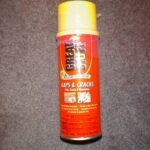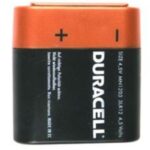Adding foam insulation to your home is a great way to close off air leaks and reduce your energy costs. There are several different types of foam insulation on the market and choosing the right one is the key to getting your job done right. This article will take you through choosing the right product, where to use it, how to use it, and how to finish the job right.
DOW and DAP are the two most common manufacturers of spray foam insulation. DOW’s Great Stuff Insulation line includes five different specialties, all of which are polyurethane-based. Only DAP’s Kwik Foam is polyurethane-based while both versions of DAPtex are latex based. The difference is that although latex-based spray foams allow for an easy water cleanup, they also have the ability to absorb water once cured. Because the application of the spray foam only occurs once, but the use of it lasts for decades, it is recommended that you choose a polyurethane-based spray foam as the long lasting features are more desirable.
Spray foam insulation can be used around any hole where there is penetration into the home including but not limited to holes for plumbing, air conditioning, dryer vents, electrical wire, and conduit. It can also be used under the sill plate and around electrical outlets. If you are using Great Stuff for these applications, you should use the Gaps and Cracks unless your hole is larger than one inch, in which case you should use the Large Gaps. Keep in mind that Great Stuff insulation will bond to almost all surfaces except for plastic.
When filling gaps around doors and windows, you must use a minimal expansion foam to prevent the frame from buckling. For this purpose, Great Stuff has its Window and Door line. Great Stuff also has a Fireblock line that is minimal expansion and can be used around a fire door that leads from the garage to the house.
To use your spray foam, simply screw the plastic straw onto the nozzle, shake the can, and push the nozzle to spray. Remember that polyurethane-based foams are highly flammable before they cure so it is important not to smoke while doing this task. Also, you may want to practice on a scrap piece of plywood or an old newspaper to get the feel of the spray, as cleanup is not easy. Before it cures, Great Stuff can be cleaned up with an acetone, but depending on what you are cleaning, you do run the risk of causing discoloration. If you cannot clean up your spray foam before it cures, allow it to cure and scrape it up as best you can. The easiest cleanup, however, is to avoid over spray. This can be done by simply filling your gaps halfway and allowing the foam to expand.
As previously mentioned, once your foam is dry, you can scrape up the excess to improve the appearance. Depending on which line you use, Great Stuff will dry several different colors, but it can be painted to conform to its surroundings. For best results, after scraping, lightly sand the cured foam before you paint it.
That’s all there is to it. Filling the gaps in your home is as easy as selecting the right product, knowing where to put it, and following the simple application steps. For a minimal investment and a little bit of time, spray foam insulation can help make that drafty house not quite so drafty.
Sources:
www.dap.com
www.greatstuff.dow.com



